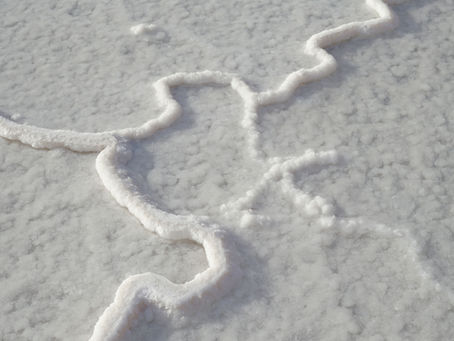top of page


How Astronauts Breathe in Space
Oxygen makes up 21% of the atmosphere. In the vacuum of space there is no atmosphere. Oxygen is created by electrolysis of water, solid...

Sylvia Rose
Mar 33 min read


Lithium Ion Batteries on Earth & in Space
Lithium-ion (Li-ion) batteries power phones, laptops, electric vehicles, satellites and spacecraft. Rechargeable energy storage devices,...

Sylvia Rose
Mar 33 min read


Lithium (Li): Science, Health & Uses
Lithium (Li) is a soft, silvery-white metal. Famous for rechargeable batteries, lithium is important to sectors like health and...

Sylvia Rose
Mar 14 min read


Metalloproteins: Biochemistry of Nature & Health
Metalloproteins are biomolecules containing metal ions. From transporting oxygen and cell signals to catalyzing chemical reactions,...

Sylvia Rose
Feb 283 min read


Transition Metals in Science and Health
Transition metals are integral to nature, science, health and technology. Common transition metals include iron (Fe), copper (Cu), nickel...

Sylvia Rose
Feb 283 min read


Zinc (Zn): Technology, Nature & Health
Zinc (Zn) is a transition metal integral to health, environment and technology. It's forged in the crucible of stars through nuclear...

Sylvia Rose
Feb 285 min read


Drone Warfare: Unmanned Combat Vehicles
Drone warfare uses advanced robotics technology to inflict destruction in various ways. It represents a paradigm shift in military...

Sylvia Rose
Feb 274 min read


Vermicompost: Composting with Worms
Vermicomposting turns organic waste into nutrient rich compost using the natural inclinations of worms like nightcrawlers and red...

Sylvia Rose
Feb 274 min read


Sustainable Gardening: Compost & Old Beer
Compost for the garden can benefit from the hidden nutrition of old or flat beer. Leftover brew contains vitamins and minerals to nourish...

Sylvia Rose
Feb 273 min read


Titanium (Ti): From Space to Earth & Back
Titanium (Ti) is a metallic element. From celestial origins titanium has widespread appeal as the metal of choice for robots,...

Sylvia Rose
Feb 274 min read


Building Robots: Elastomers, Metals & Plastics
Building robots is a mix of engineering, technology, and creativity. Metals and plastics are the standout choices for roboticists....

Sylvia Rose
Feb 273 min read


How Salamanders Regenerate Body Parts
Salamanders can regenerate lost body parts like limbs, tail, eyes, heart and brain. Unlike humans, who can heal only minor wounds,...

Sylvia Rose
Feb 263 min read


Silicone: Creation, Robotics & Technology
Silicone is strongly integrated into modern technology. From kitchen to electronics and self-healing robots, silicone is a human made...

Sylvia Rose
Feb 264 min read


Compost: Teeming Metropolis of Life & Death
Compost is a complex network of life, such as insects and generations of unseen microorganisms. In this earthy metropolis they busily...

Sylvia Rose
Feb 263 min read


Self-Healing Silicone Technology in Robotics
Self-healing silicone is a regenerative polymer network valued in robotics, where durability and longevity are vital. It revolutionizes...

Sylvia Rose
Feb 263 min read


Ancient Salt & Health: Physician Dioscorides
Dioscorides is a physician of Rome in the first century AD. He serves as a doctor in Nero's army and later writes De Materia Medici ,...

Sylvia Rose
Feb 255 min read


Salt (NaCl): Science, History & Cuisine
Salt is primarily sodium chloride (NaCl). As a naturally occurring mineral it's known as halite or rock salt. Vital for food preservation...

Sylvia Rose
Feb 255 min read


Earthworms: Soil Health & Ecosystem Balance
Earthworms are movers and shakers of ecosystems. They're essential for the health and fertility of soil. They provide nutrients to plants...

Sylvia Rose
Feb 243 min read


Irrigation in History: Greening of the Land
Irrigation creates rich agricultural lands from dry barren earth. For thousands of years, people invent and refine ways to move water to...

Sylvia Rose
Feb 245 min read


Homo-Fermentation in Lactic Acid Bacteria
Lactic acid bacteria (LAB) have been used in fermentation and food processing for thousands of years. The two forms of LAB fermentation,...

Sylvia Rose
Feb 234 min read
bottom of page